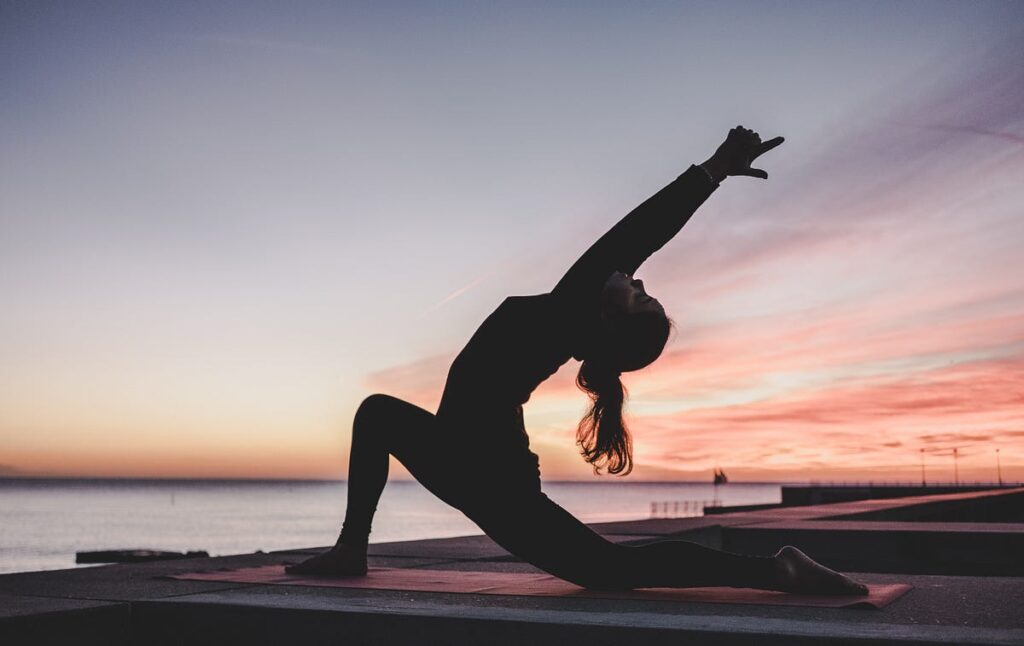Movement meditation is a unique practice that combines physical movement with mindfulness, creating a harmonious connection between the body and mind. Unlike traditional seated meditation, movement meditation encourages practitioners to be fully present in the body while engaging in gentle, flowing movements. This form of meditation can take many forms, including yoga, tai chi, qigong, and mindful walking. This comprehensive guide explores the principles, benefits, techniques, and practical applications of movement meditation, providing a roadmap for those seeking to integrate this transformative practice into their daily lives.
Understanding Movement Meditation
Movement meditation involves using physical activity as a focal point for mindfulness practice. The key is to engage in movements that are slow, deliberate, and conscious, allowing the practitioner to tune into the sensations and rhythms of the body. This practice encourages a deep sense of awareness and presence, helping individuals to connect with their inner selves and the present moment.

The Principle Behind Movement Meditation
The core principle of movement meditation is to cultivate mindfulness through the act of moving the body. This involves:
- Awareness of the Body: Paying close attention to the physical sensations, movements, and rhythms of the body.
- Mindful Breathing: Synchronizing breath with movement to enhance focus and relaxation.
- Present Moment Awareness: Staying fully present in each movement, without distraction or judgment.
- Gentle and Intentional Movements: Engaging in slow, deliberate movements that promote relaxation and awareness.
By practicing movement meditation, individuals can develop a deeper connection to their bodies and the present moment, leading to greater overall well-being.
The Science of Movement Meditation
Research has shown that movement meditation can have a range of positive effects on physical and mental health. Studies have demonstrated that practices like yoga, tai chi, and qigong can improve balance, flexibility, strength, and cardiovascular health. Additionally, these practices have been linked to reduced stress, anxiety, and depression, as well as improved mood and overall quality of life.
Benefits of Movement Meditation
Movement meditation offers a wide range of benefits for the body and mind. Some of the most notable benefits include:
Physical Health Benefits
- Improved Flexibility and Balance: Engaging in regular movement meditation can enhance flexibility, balance, and coordination.
- Increased Strength and Endurance: Many forms of movement meditation involve gentle resistance and weight-bearing exercises that can improve muscle strength and endurance.
- Enhanced Circulation and Cardiovascular Health: The rhythmic movements and deep breathing associated with movement meditation can improve blood circulation and support cardiovascular health.
- Pain Relief: Movement meditation practices can help alleviate chronic pain by promoting relaxation, reducing muscle tension, and improving body mechanics.
Mental and Emotional Health Benefits
- Reduced Stress and Anxiety: Movement meditation can activate the parasympathetic nervous system, promoting relaxation and reducing stress and anxiety levels.
- Improved Mood and Emotional Regulation: The practice encourages mindfulness and self-awareness, which can lead to better emotional regulation and a more positive outlook on life.
- Enhanced Focus and Concentration: Movement meditation requires sustained attention to the body and breath, which can improve overall focus and concentration.
- Greater Self-Awareness and Mindfulness: The practice fosters a deeper connection to the body and the present moment, enhancing self-awareness and mindfulness.
Techniques for Practicing Movement Meditation
There are several techniques for practicing movement meditation, each with its unique approach and benefits. Here are some of the most common methods:
Yoga
Yoga is a well-known form of movement meditation that combines physical postures, breathing exercises, and mindfulness practices.
- Find a Quiet Space: Choose a quiet and comfortable place where you can practice without distractions.
- Set an Intention: Begin each session by setting an intention or focusing on a specific theme, such as gratitude or compassion.
- Synchronize Breath and Movement: Move through a series of postures (asanas) while coordinating your breath with each movement.
- Stay Present: Focus on the sensations in your body and the rhythm of your breath, staying fully present in each posture.
Tai Chi
Tai chi is a Chinese martial art that emphasizes slow, flowing movements and deep breathing.
- Learn the Basics: Start with simple tai chi forms and sequences, gradually building your skills and understanding.
- Focus on Flow: Move slowly and gracefully, maintaining a continuous flow of movement.
- Integrate Breath: Coordinate your breath with each movement, inhaling and exhaling deeply and naturally.
- Stay Mindful: Pay attention to the sensations in your body and the flow of energy (qi) as you move.
Qigong
Qigong is another Chinese practice that combines movement, breath control, and meditation to cultivate energy (qi) and promote health.
- Begin with Warm-Up Exercises: Start with gentle warm-up exercises to loosen your body and prepare for practice.
- Practice Postures and Movements: Engage in a series of qigong postures and movements, focusing on slow, deliberate actions.
- Breathe Mindfully: Synchronize your breath with each movement, maintaining a calm and steady rhythm.
- Cultivate Awareness: Focus on the flow of energy within your body, staying mindful of each sensation and movement.
Mindful Walking
Mindful walking is a simple yet powerful form of movement meditation that involves walking slowly and deliberately with full awareness.
- Choose a Quiet Path: Select a quiet and safe place where you can walk without interruptions.
- Walk Slowly: Move at a slow, steady pace, paying attention to each step.
- Focus on Sensations: Notice the sensations in your feet and legs as they move, as well as the rhythm of your breath.
- Stay Present: Keep your attention on the present moment, gently bringing your mind back if it starts to wander.
Practical Tips for Effective Practice
To maximize the benefits of movement meditation, consider the following practical tips:
Establish a Regular Practice
Consistency is key to developing a successful meditation practice. Aim to practice movement meditation at the same time each day, gradually increasing the duration as you become more comfortable.
Create a Conducive Environment
Choose a quiet, comfortable space free from distractions. Consider using mats, cushions, or other props that support your practice.
Start Small
If you’re new to movement meditation, start with short sessions of 10-15 minutes and gradually increase the duration as your concentration improves.
Be Patient and Non-Judgmental
It’s normal for the mind to wander during meditation. When this happens, gently guide your attention back to your movements and breath without judging yourself. Patience and persistence are crucial.
Use Guided Practices
If you find it challenging to meditate on your own, consider using guided movement meditation videos or classes. These can provide structure and support, especially for beginners.
Track Your Progress
Keeping a meditation journal can help you track your progress and reflect on your experiences. Note any challenges, insights, or changes in your physical and mental state.
Integrating Movement Meditation into Daily Life
Beyond formal meditation sessions, the principles of movement meditation can be integrated into daily life to enhance mindfulness and presence.
Mindful Daily Activities
Incorporate mindfulness into your daily routines, such as brushing your teeth, washing dishes, or getting dressed. Focus on the sensations and movements involved in each activity.
Mindful Commuting
Use your commute as an opportunity to practice mindful movement. Pay attention to your body and breath as you walk, drive, or take public transportation.
Stretching Breaks
Take short breaks throughout the day to stretch and move mindfully. Even a few minutes of gentle stretching can help reset your mind and body.
Mindful Exercise
Apply the principles of movement meditation to your regular exercise routine. Focus on your breath and body sensations during activities such as running, swimming, or weightlifting.
Challenges and How to Overcome Them
Despite its many benefits, movement meditation can present several challenges, especially for beginners. Here are some common obstacles and strategies to overcome them:
Restlessness and Impatience
It’s common to feel restless or impatient, especially during longer sessions. To combat this, start with shorter sessions and gradually increase the duration. Practicing in a comfortable environment can also help.
Distractions
External and internal distractions can disrupt your focus. Minimize external distractions by choosing a quiet space and using earplugs or white noise if necessary. For internal distractions, acknowledge them without judgment and gently bring your attention back to your movements and breath.
Boredom
Boredom can arise from repeated focus on the same movements. To counter this, remind yourself of the benefits of movement meditation and stay committed to the practice. Changing your routine or incorporating different techniques can also add variety.
Doubt and Self-Criticism
It’s normal to doubt your ability to meditate or to criticize yourself for a wandering mind. Overcome this by adopting a compassionate attitude towards yourself. Remember that meditation is a skill that improves with practice.
Physical Discomfort
Engaging in physical movement can lead to discomfort or strain. Ensure you are moving within your limits and using proper techniques. Stretching before and after meditation can also help alleviate discomfort.
Conclusion
Movement meditation is a versatile and effective practice that offers a wealth of benefits for physical, mental, and emotional well-being. By integrating mindful movement into daily life, individuals can develop a deeper connection to their bodies and the present moment, leading to greater overall harmony and balance. With regular practice and the application of practical tips, anyone can develop the skills necessary to integrate movement meditation into their daily lives. Embrace the journey of movement meditation and discover the profound impact it can have on your life


